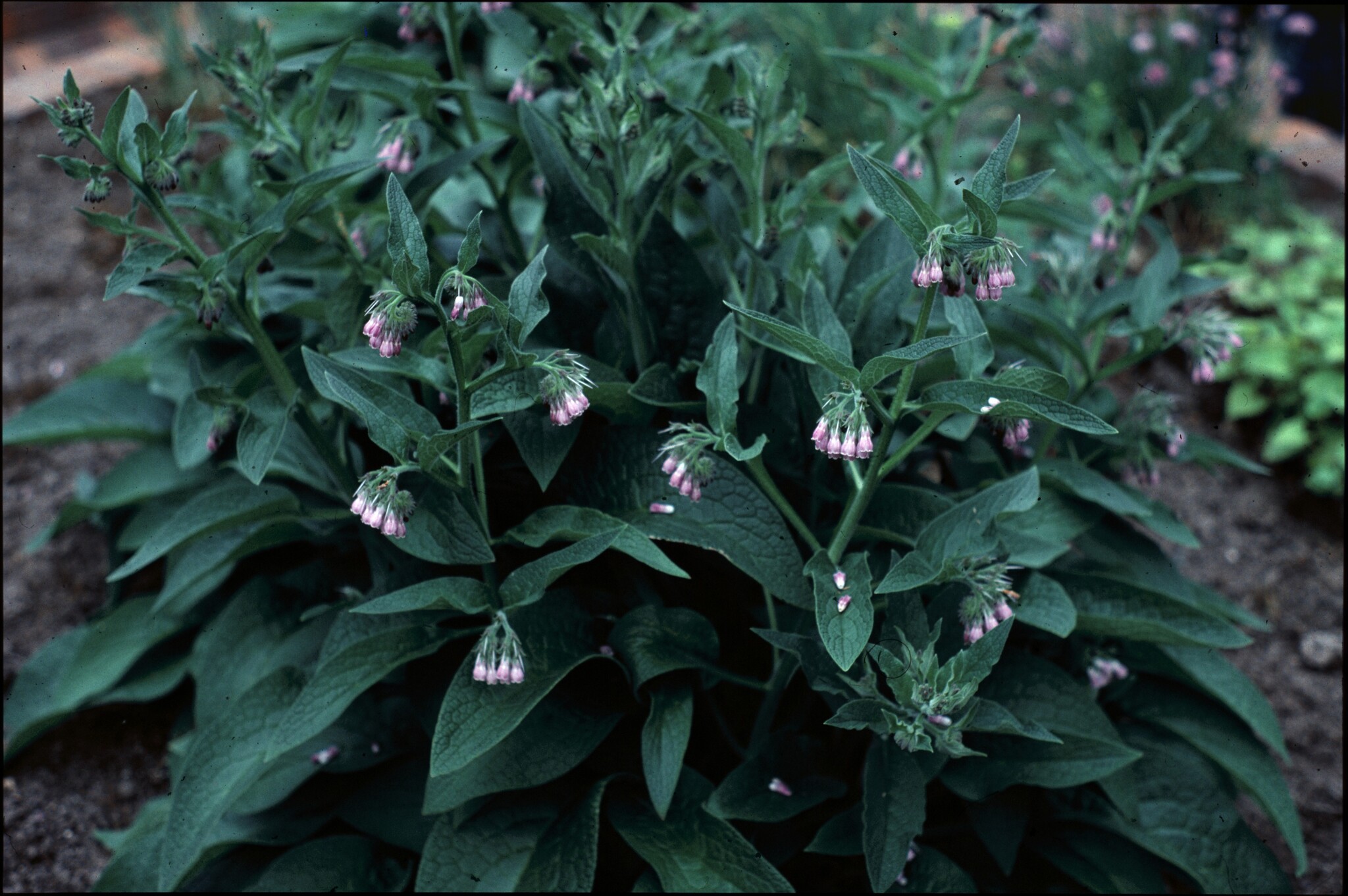
Greek syn — together, phyton — plant, referring to the reputed medicinal powers of the plant.
Erect, bristly, hairy, perennial herbs, often with tuberous roots. Leaves simple, both at the base and along the stem, sometimes more or less opposite. Flowers of various colours in coiled clusters, with a tubular corolla that has scales in the throat. Stamens enclosed within the tube. Fruit of 4 nutlets, each with a ring of tissue.
Grown mostly in herb gardens.
Seed, division and root cuttings.
Some plants with medicinal uses.
Flower clusters with bracts; scales in the throat of the flower linear and pointed.
35 species from Europe and the Mediterranean to the Caucasus.
Ingram (1961).
Source: (2002). Boraginaceae. In: . Horticultural Flora of South-eastern Australia. Volume 4. Flowering plants. Dicotyledons. Part 3. The identification of garden and cultivated plants. University of New South Wales Press.
